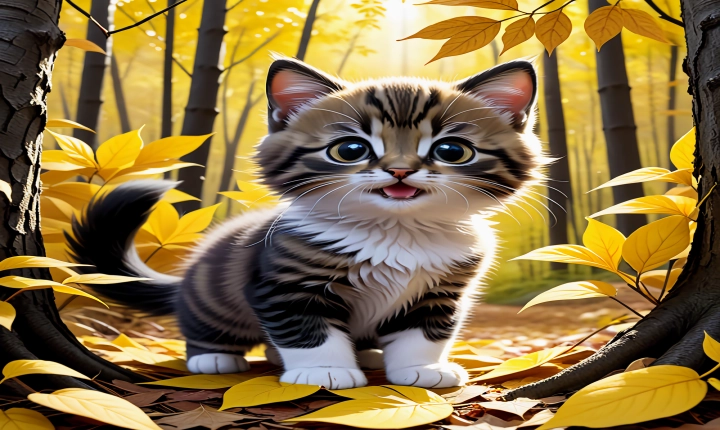Title: Unlocking the Full Potential of AI-Generated Images: A Guide to Upscaling
Introduction
Artificial intelligence has made rapid advancements in the field of image generation, producing stunning visuals that could rival photographs taken by human photographers. However, there are times when AI-generated images need to be upscaled to higher resolutions for various applications such as printing, digital advertising, or quality enhancement. In this article, we will explore the methods and best practices for upscaling AI-generated images to unleash their full potential.
Understanding AI-Generated Images
AI-generated images are created by algorithms that use machine learning techniques to learn from a large dataset of images and generate new visuals that mimic the appearance of real-world objects, landscapes, or people. These images are often impressive in their creativity and detail, but they may be limited by their original resolution, making them unsuitable for certain uses.
Methods for Upscaling AI-Generated Images
1. Super-Resolution Models: There are AI-powered super-resolution models that can increase the resolution of images without losing quality. These models use deep learning techniques to predict and generate high-resolution details based on the low-resolution input image.
2. Generative Adversarial Networks (GANs): GANs are a type of AI architecture that consists of two neural networks – a generator and a discriminator – which work together to create high-quality images. By training a GAN on a dataset of low and high-resolution images, it can learn to generate upscaled versions of input images while preserving their original features.
Best Practices for Upscaling AI-Generated Images
1. Choose the Right Model: Different super-resolution models and GAN architectures have varying levels of performance and capabilities. It is essential to select the appropriate model based on the specific requirements of the image upscaling task.
2. Use High-Quality Input Images: The quality of the upscaled image is heavily influenced by the quality of the input image. High-resolution and clean AI-generated images will produce better results when upscaled.
3. Experiment with Parameters: Many super-resolution models and GANs have adjustable parameters that can impact the final output. Experimenting with these parameters can help fine-tune the upscaling process for optimal results.
4. Post-Processing: After upscaling an AI-generated image, it may be beneficial to apply additional image processing techniques such as sharpening, denoising, or color correction to enhance the visual quality further.
Applications of Upscaled AI-Generated Images
Upscaled AI-generated images can be applied to various fields such as digital art, advertising, and entertainment. They can be utilized for large-format printing, digital displays, virtual reality environments, and high-quality image-based content creation.
Conclusion
Upscaling AI-generated images unlocks their full potential by allowing them to be used in a wider range of applications while maintaining their visual fidelity. By leveraging advanced super-resolution models and GANs, along with best practices for upscaling, AI-generated images can be transformed into high-quality visuals suitable for professional use. As AI continues to advance, the upscaling of AI-generated images will play a crucial role in harnessing the power of machine-generated creativity.
